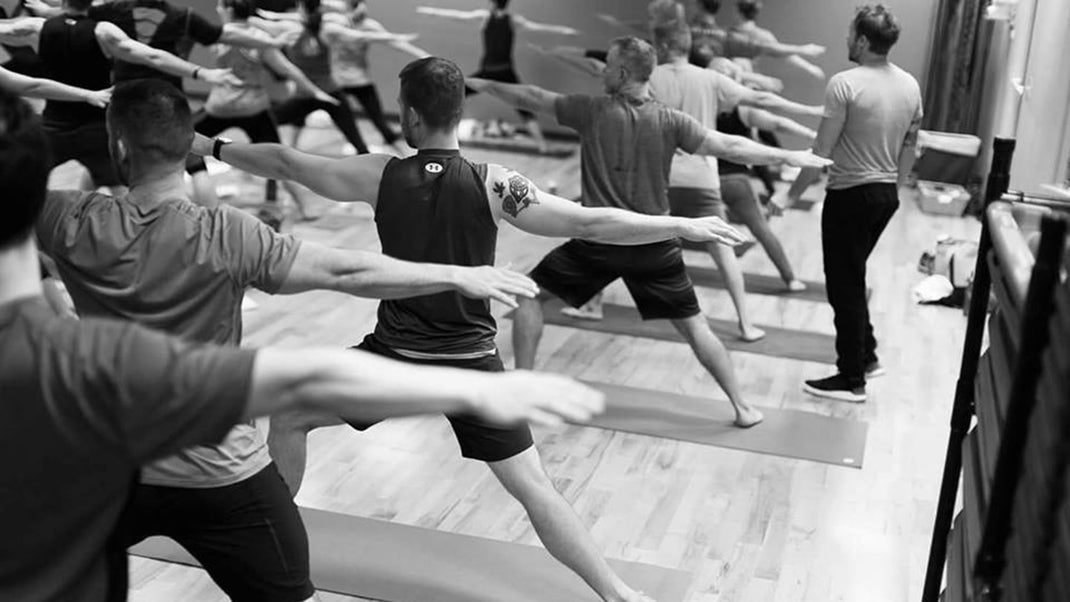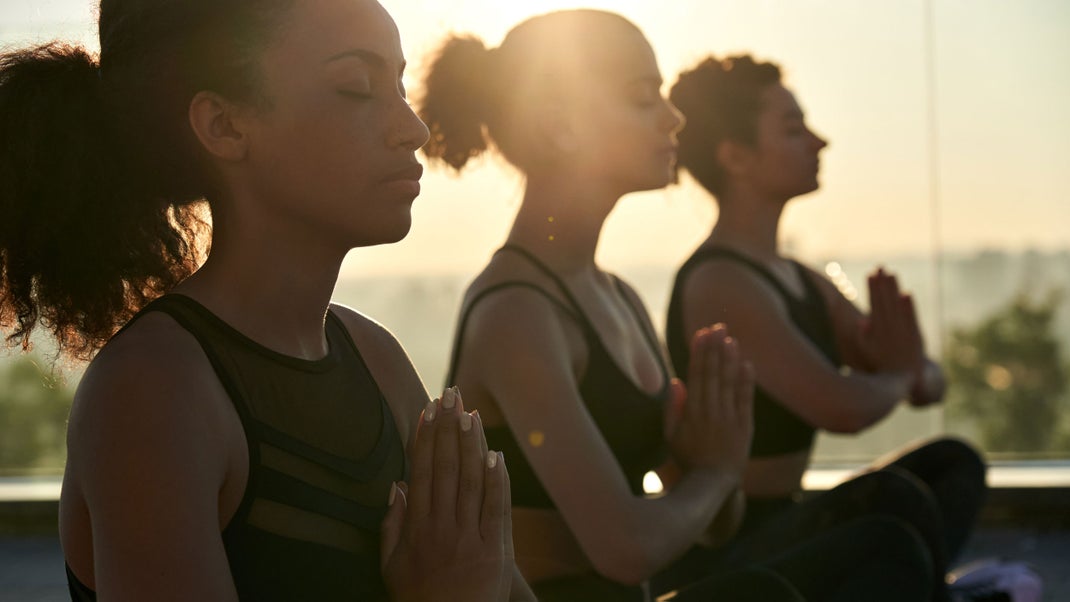Many people have a negative opinion of men that practice yoga. Although the backlash has lessened over time, it’s still common to hear jokes about “yoga pants” and “man buns.” The good news is that there are plenty of comebacks for when you hear these comments from others or even yourself! In this blog post, we share 7 great responses to yoga-shaming remarks so you can feel more confident in your practice!
At its inception, yoga was a predominantly male practice. But when it found its way to the West, middle and upper-class women with the time and means to pursue self-care quickly became the target demographic. Thus, yoga businesses began marketing to women with female models, a feminine voice, and women’s apparel. As more and more women began practicing yoga, marketing messages perpetuated the idea that yoga is not masculine. With that kind of branding, it’s no wonder more men didn’t willingly seek their nearest studio to sweat and be confronted with the inflexibilities all beginning yogis have in a room full of legging-clad, bendy women.
Fortunately, yoga is changing. Yoga Journal’s 2016 Yoga in America study showed the number of male practitioners had risen by 250 percent since 2012, which means men now make up nearly a third of the American yoga community. Athletes and male celebrities continue to slowly but surely pave the yogic path for more men and help shift the overall perception of yoga among them. At BrogaⓇ Yoga, our experience tells us, men need tangible results to keep them returning to the mat. Here, some of the top reasons the men we know are proud they practice yoga.
7 Ways to Proudly Defend Your Yoga Practice
1. “I can work longer, harder, stronger.”
Despite its reputation, yoga is more than deep binds and flexibility. Bodyweight movements, which cultivate functional strength and flexibility while supporting a dynamic range of motion, help support neuromuscular efficiency. When everything works synergistically, we see greater rewards from disciplined practice, such as greater endurance, increased range of motion, improved flexibility, and injury prevention
2. “I can breathe easy, finally.”
What sets yoga apart from other forms of exercise is its focus on breath control (pranayama). Certain postures like side bends, twists, and backbends help create openness in the thoracic cavity, creating space for deeper breathing. Through deeper breathing, the muscles of respiration (intercostals, abdominals, and diaphragm) are toned. Greater lung capacity helps improve sports performance, performance in the bedroom, immunity, energy levels, and your body’s metabolic systems (those that take in nutrients and remove toxins).
3. “I feel less stressed.”
Certain breathing practices and meditation can help relax the mind and stabilize the autonomic nervous system, leading to easier activation of the relaxation response when presented with internal or external stressors. Postures have this effect on the muscles and organs, relieving physical stressors and creating homeostasis. Stress relief, both physical and mental, translates beyond the mat into improved resiliency in the face of stressful life situations.
4. “I can actually focus.”
Balancing in Warrior III makes it especially challenging to let your mind wander to to-do list-making. Yoga poses are designed to require focused attention to the body and breath. Coordinating stable movement with the breath cultivates mindfulness, or present-moment awareness, which supports concentration, mental clarity, and memory recall. Sensory overload is a daily reality in the average person’s life. Culturally, busyness is praised and self-care is indulgent. A class or home practice provides the opportunity to tune out the external demands and turn inward to give the senses a needed rest.
5. “I’m more aware of my own wants and needs.”
As both an internal and external practice, yoga shows us how we show up when faced with challenges and transitions. Through practice, awareness is gained of muscle imbalances, internal dialogue, mental and emotional endurance, and how to uniquely express postures and movements. Self-awareness is beneficial in understanding the interconnectedness of everything.
6. “Sex is better.”
Why? All the above (and more), of course. Yoga postures call for engagement and awareness of the pelvic floor, specifically the perineum. Activation of this space helps with circulation, control, and awareness, which can heighten arousal. Improved strength, endurance, lung capacity, mindfulness, and a connection to your own needs and wants will no doubt enhance your connection. When we experience something pleasurable, a natural response is a desire to share it, especially with someone we love. Dedication to a yoga practice is a form of self-love and self-compassion. Individual practice of these only strengthens our ability to generously extend it to another, which helps the entire relationship (under the sheets and beyond).
7. “I have met some awesome new people.”
When starting something new outside your home environment, you’ll meet new people. Yoga classes often become micro-communities, and people form relationships through their shared efforts towards living healthier lives. Engaging with people outside your comfort zone can expand your ability to extend compassion, ultimately changing how you interact with all beings in your life.
Conclusion:
So, there you have it. Seven great comebacks for anyone facing yoga-shaming. As you can see, the benefits of a yoga practice are vast and varied. From increased physical strength and flexibility to better mental focus and awareness, yoga has something to offer everyone.
And these are just a few of the reasons why people continue to practice even in the face of occasional judgment. With all its amazing benefits, who wouldn’t want to give yoga a try?



